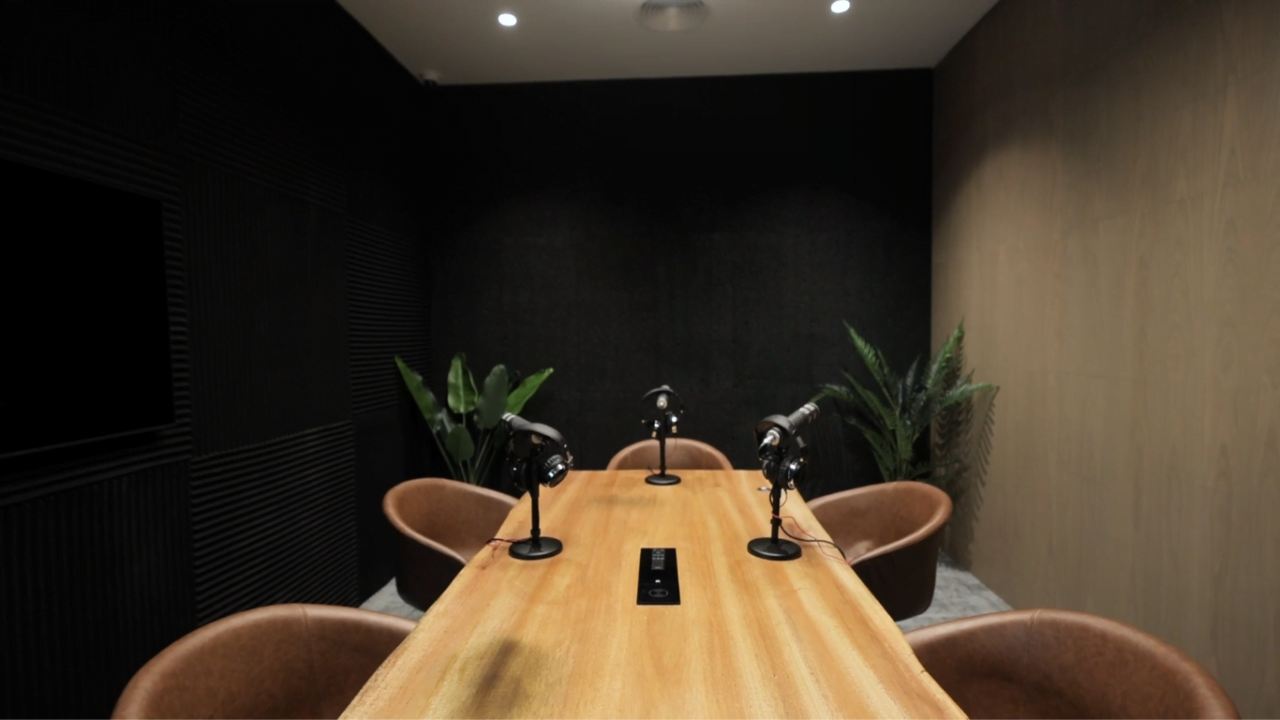Designing a podcast room requires careful consideration of acoustics, equipment, and functionality. Here are some key factors to keep in mind when designing a podcast room:
The room size and shape should be appropriate for the number of people who will be using the space. Ideally, the room should have a rectangular shape to minimise sound reflections.

Proper acoustic treatment is essential to achieving a high-quality recording. The room should be treated with sound-absorbing materials such as acoustic foam, diffusers, and bass traps to minimise sound reflections and echo.
The podcast room should be equipped with high-quality microphones, headphones, and a mixing console. The room should also have a computer with recording software and a high-speed internet connection.
Proper lighting is important for creating a comfortable and professional atmosphere in the podcast room. It's important to use soft, diffused lighting that won't create harsh shadows.
Comfortable seating and appropriate furniture, such as tables and chairs, are essential for creating a functional and comfortable podcasting environment.
The room should have easy access to power outlets and internet connections for all the equipment used.
Sound isolation is important to prevent outside noise from interfering with the recording. The room should be soundproofed using materials such as acoustic doors and windows, or by creating a separate, isolated space within the room.
By considering these factors, designers can create a podcast room that provides high-quality audio and a comfortable, functional space for podcasting.
